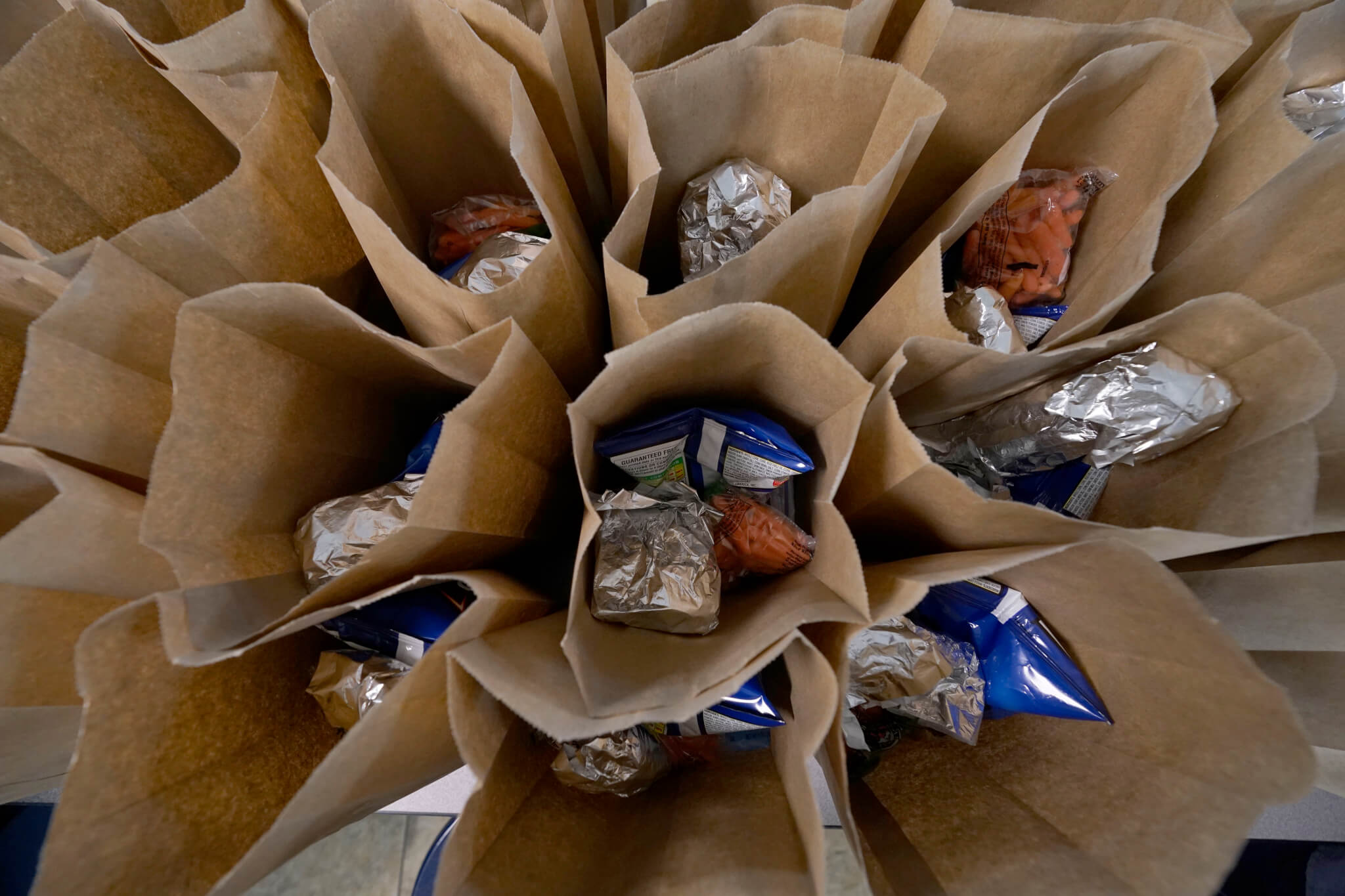
Many families and their children come to depend on the free meals as a means of daily sustenance. (AP Photo/Rogelio V. Solis)
Some students will still qualify for free school meals, while other families will pay full price.
In some ways, it’s a step in the right direction, and a step back in others. The good news? Children across the country will still be able to get access to free nutritious food this summer. The unfortunate news for many families? Universal free school meals will not continue into the upcoming school year.
In February, Dogwood reported on the possibility of a dozen child nutrition waivers set to expire on June 30. Those waivers expanded where and when personnel could serve the meals, gave flexibility for menu changes based on supply chain issues, and allowed children to eat free of charge.
On June 25, President Joe Biden signed the Keep Kids Fed Act. The legislation extends some of the food assistance measures for children, but not others.
Out of Pocket?
One of the most notable changes for the upcoming school year is a reversion to a pre-pandemic practice. For the upcoming 2022-23 school year, students in many areas will need to fill out an application in order to receive a free or reduced price meal. Prior to the pandemic, more than 460,000 of Virginia’s 1.2 million students were eligible for free or reduced price school meals.
The legislation also provides an additional temporary reimbursement of 40 cents per lunch and 15 cents per breakfast, and grants child care centers with an extra 10 cents reimbursement per meal, according to the US Department of Agriculture (USDA).
Furthermore, food providers may continue serving meals in settings outside of school cafeterias, students are still allowed to bring food home, and supply chain issues are still met with relaxed nutrition standards.
Before the pandemic, free summer meals were often served in high-poverty areas, and children were required to eat the meal on-site rather than take it home to eat in private. Sarah Steely, director of No Kid Hungry Virginia, expressed that for some families, eating on-site wasn’t ideal.
“It’s prohibitive. It’s hard for a family who’s maybe worried about budget, worried about gas, to drive 20 minutes out of their way, and then have to sit on-site for the kids to eat the meal, and then drive home, and then do it all again the next day,” Steely said. “Parents and guardians work. Kids might not have that transportation. If they do have the transportation, the time to sit and eat on-site might not be there.”
The flexibilities introduced during the pandemic and extended through the Keep Kids Fed Act helps families.
“The beautiful flexibility of being able to send home multiple meals, making families’ dollars stretch further, that one, round-trip gas usage to be able to bring home three, four, five, six, seven days’ worth of meals at once — that’s a huge, a huge win,” Steely said.
Free School Meals
Despite the lack of a national universal free school meals provision, some students across the nation will receive free school meals thanks to a variety of programs already in place.
All 50 states are required to provide free meals if the students’ household receives Supplemental Nutrition Assistance Program (SNAP) benefits. Children are also automatically eligible for free meals if anyone in their household participates in the Temporary Assistance for Needy Families program or the Food Distribution Program on Indian Reservations, according to the USDA’s Food and Nutrition Service.
Additionally, children experiencing homelessness, children in foster care, runaway youth, and children of migrant workers qualify for free school meals if their caregiver fills out an application.
All students in some low-income areas receive free school meals thanks to the Community Eligibility Provision (CEP). While some urban areas, like Richmond and Alexandria, had schools eligible to participate in the CEP during the 2021-22 school year, the program also impacted schools located in rural areas throughout Virginia.
Many rural areas had an Identified Student Percentage (ISP) exhibiting a need of more than 50%, including Lee County Public Schools at 67.15%. The westernmost location in Virginia, Lee County exhibited a 19% food insecurity rating in 2019, according to Feeding America’s Map the Meal Gap project.
In cities, the need also soared. Franklin City Public Schools had Virginia’s highest public school ISP of the year at 89.54%. However, the locality as a whole had a food insecurity rate of 10.8% — nearly 10% lower than some counties in Southwest Virginia near the Kentucky and Tennessee borders.
Feeding the Children
On June 30, students got another win — the Biden Administration announced that the USDA would provide nearly $1 billion in additional funding to schools to support the purchase of American-grown foods for their meal programs.
“The Biden Administration knows that ongoing impacts of supply chain issues and rising food costs continue to be a challenge for many schools and child nutrition operators, and we are thankful for Congress stepping up to ease some of their burdens,” said Agriculture Secretary Tom Vilsack in a press release about the funding. “On our end, this funding boost is yet another step the administration is taking to ensure every child who needs a meal, gets one. No matter the circumstances, USDA and all our partners must continue collaborating to provide our young ones with the healthy meals they count on.”
State agencies will distribute the money to schools across the country, so they can purchase domestically-grown foods for their meal programs.
In Virginia, the recent budget included $8.2 million in funding over the next two years to help local school divisions eliminate the cost of school breakfast and lunch for students eligible for reduced price meals under the federal National School Lunch Program and School Breakfast Program. Gov. Ralph Northam, a Democrat, included the funding in his outgoing budget.
“Like there’s just a lot of good happening,” Steely said. “And, you know, No Kid Hungry believes that every kid deserves to have access to three meals a day. And we also believe that the program operators, the people that are working so hard to make these meals available, that they should be supported and resourced adequately to serve our kids. And we’re seeing both of those things happen through these different programs.”
Politics

VIDEO: Domestic abuse victims speak out against the gun law bills Gov. Glenn Youngkin vetoed
Senate Bill 47 and House Bill 46 aim to close the loophole that allows offenders to transfer their firearms to someone else instead of relinquishing...

Virginia Beach nurse: Rep. Kiggans should stand with patients, protect the ACA
With almost 350,000 Virginians relying on the Affordable Care Act for their health insurance, it is critical that Virginians know their members of...
Local News

Virginia verses: Celebrating 5 poetic icons for National Poetry Month
There’s no shortage of great writers when it comes to our commonwealth. From the haunting verses of Edgar Allan Poe, who found solace in Richmond's...

Join the fun: Recapping Family Literacy Night’s storybook adventures
When’s the last time you read a book aloud with a loved one? If it’s difficult to answer that question, then maybe it’s time to dust off that TBR...





